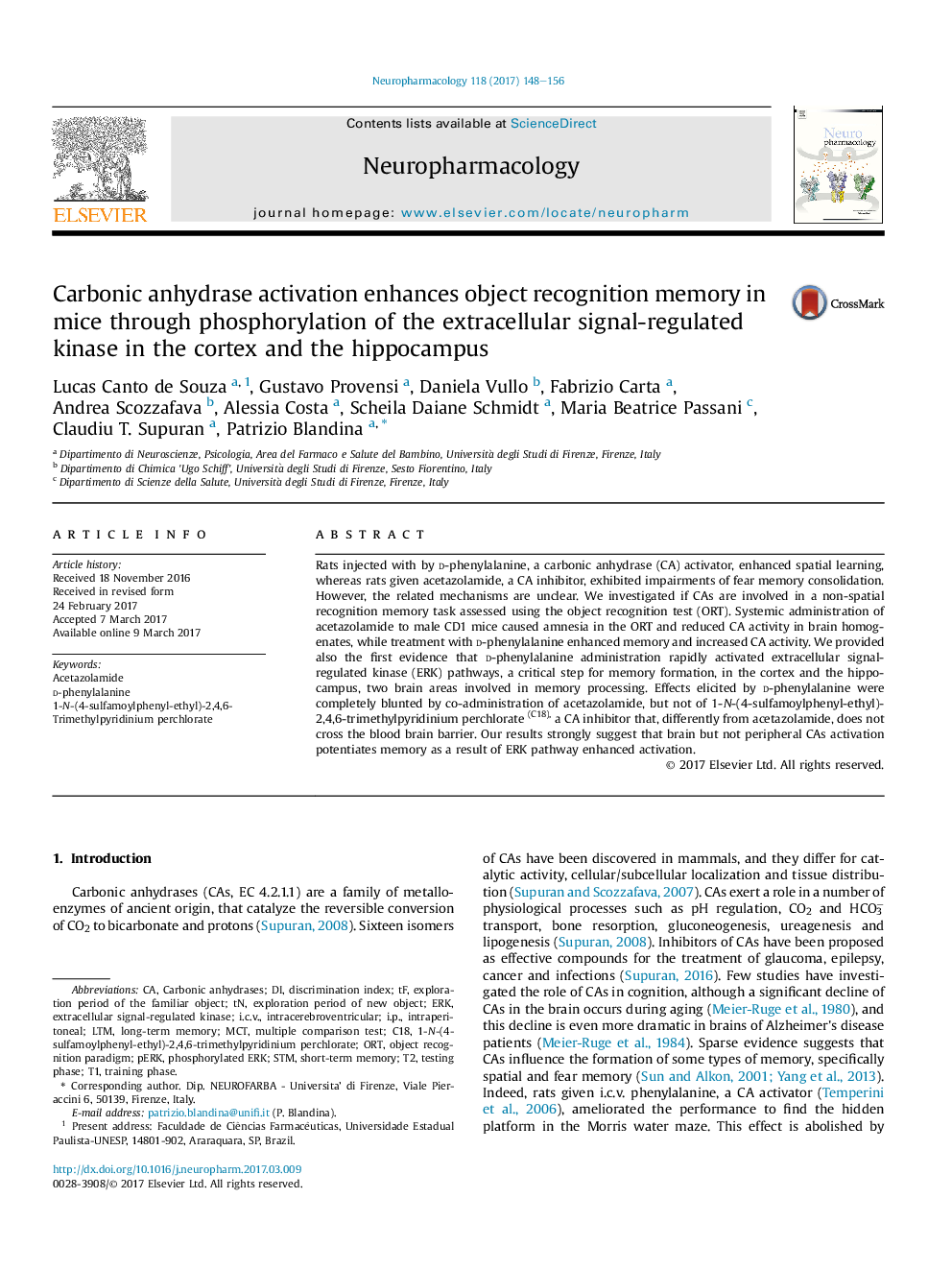| کد مقاله | کد نشریه | سال انتشار | مقاله انگلیسی | نسخه تمام متن |
|---|---|---|---|---|
| 5549022 | 1556599 | 2017 | 9 صفحه PDF | دانلود رایگان |
- Acetazolamide, a carbonic anhydrase (CA) inhibitor, administered to CD1 mice caused amnesia in the object recognition test.
- C18, a CA inhibitor that does not cross the blood brain barrier, did not produce amnesia in the object recognition test.
- d-phenylalanine, a CA activator that crosses the blood brain barrier, enhanced memory and increased CA activity in the brain.
- d-phenylalanine administration activated ERK pathway, a critical step for memory formation, in mice hippocampus and cortex.
- The effects elicited by d-phenylalanine were blunted by co-administration of acetazolamide, but not of C18.
Rats injected with by d-phenylalanine, a carbonic anhydrase (CA) activator, enhanced spatial learning, whereas rats given acetazolamide, a CA inhibitor, exhibited impairments of fear memory consolidation. However, the related mechanisms are unclear. We investigated if CAs are involved in a non-spatial recognition memory task assessed using the object recognition test (ORT). Systemic administration of acetazolamide to male CD1 mice caused amnesia in the ORT and reduced CA activity in brain homogenates, while treatment with d-phenylalanine enhanced memory and increased CA activity. We provided also the first evidence that d-phenylalanine administration rapidly activated extracellular signal-regulated kinase (ERK) pathways, a critical step for memory formation, in the cortex and the hippocampus, two brain areas involved in memory processing. Effects elicited by d-phenylalanine were completely blunted by co-administration of acetazolamide, but not of 1-N-(4-sulfamoylphenyl-ethyl)-2,4,6-trimethylpyridinium perchlorate (C18), a CA inhibitor that, differently from acetazolamide, does not cross the blood brain barrier. Our results strongly suggest that brain but not peripheral CAs activation potentiates memory as a result of ERK pathway enhanced activation.
Journal: Neuropharmacology - Volume 118, 15 May 2017, Pages 148-156
